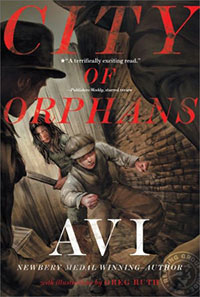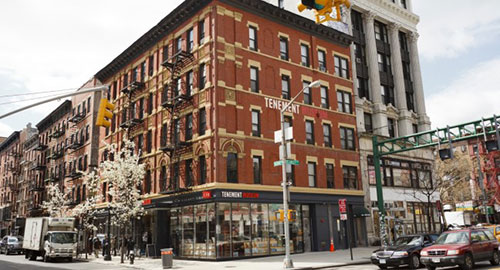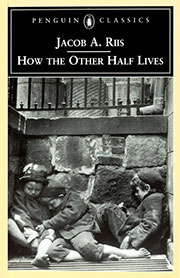 Like millions of Americans, my forebears came from Europe, landed on Ellis Island, and went on to New York City, where they stayed. One of the places they stayed was New York City’s Lower East Side. This was a time when the city had some thirty daily newspapers that were not written in the English language. Amazingly enough, much of the tenement architecture, has remained in place. There is even an existing, wonderful Tenement Museum, where I saw and learned a great deal, and which helped me write my novel, City of Orphans, a novel about immigrant life in New York, at the end of the 19th Century.
Like millions of Americans, my forebears came from Europe, landed on Ellis Island, and went on to New York City, where they stayed. One of the places they stayed was New York City’s Lower East Side. This was a time when the city had some thirty daily newspapers that were not written in the English language. Amazingly enough, much of the tenement architecture, has remained in place. There is even an existing, wonderful Tenement Museum, where I saw and learned a great deal, and which helped me write my novel, City of Orphans, a novel about immigrant life in New York, at the end of the 19th Century.

Even I, when I completed university (1960’s), came to live in the area. I could not locate the actual building—one was so much like another. But it was a five floor walk-up, a tiny three-room apartment. In the small kitchen was a bath tub. By placing a wooden board over it I had my kitchen table. Then my old college room-mate arrived. Tenement life. Rent: Thirty-two dollars a month.
By all accounts—and there are many accounts and memoirs—at the end of the 19th Century, it was an intensely crowded area, full of life, to be sure, but also full of filth, fires, and disease. Poverty was extreme and rampant.
 If you want to see what it was like, find a copy of How the Other Half Lives by Jacob Riis, a highly influential photojournalistic account of the city at the time—one of the first books of the kind. Be advised; it is also full of racial bigotry, another staple of the day. The photographs are stunning.
If you want to see what it was like, find a copy of How the Other Half Lives by Jacob Riis, a highly influential photojournalistic account of the city at the time—one of the first books of the kind. Be advised; it is also full of racial bigotry, another staple of the day. The photographs are stunning.
When I was doing research for the book, what caught my attention was the constant references to children, countless numbers of them who lived on the city streets. To begin, there was no room for them in the tiny tenements. Moreover, these young kids were often abandoned. Most interesting to me, these kids, being the children of immigrants, quickly became assimilated (for better and for worse) into American ways, distancing them from the ways and culture of their parents. Indeed, they are referred to as “orphans with parents.” Hence the title of the book, City of Orphans.
The Geless family, the Danish immigrant family at the center of the book, struggle to keep together, midst all the hardship, to be loving and caring to one another. And even—not at all uncommon in the day—taking in an abandoned child because that’s what one did.
When I read about those times I was struck by the vibrancy of life, just as I was moved by how difficult life—assuming one lived—was. What I tried to capture was the enormous energy of that day, and the surging emotions that must have also been part of each day.
Some books, you enjoy writing. This book I loved.
3 thoughts on “Story Behind the Story #60: City of Orphans”
Can’t wait to read it and buy it for my students, as well.
Enjoyed this book–and the post.
My grandparents came that way, also. Their burning goal was to be just as good as “real” Americans, sometimes to the anguish of older relatives whose ways were deemed embarrassing.
City of Orphans is a brilliant book.